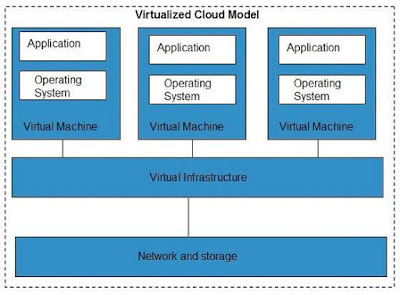There are certain technologies working behind the cloud computing platforms making cloud computing flexible, reliable, and usable. These technologies are listed below:
- Virtualization
- Service-Oriented Architecture (SOA)
- Grid Computing
- Utility Computing
Virtualization
Virtualization is a technique, which allows to share single physical instance of an application or resource among multiple organizations or tenants (customers). It does this by assigning a logical name to a physical resource and providing a pointer to that physical resource when demanded.
The Multitenant architecture offers virtual isolation among the multiple tenants. Hence, the organizations can use and customize their application as though they each have their instances running.
Service-Oriented Architecture (SOA)
Service-Oriented Architecture helps to use applications as a service for other applications regardless the type of vendor, product or technology. Therefore, it is possible to exchange the data between applications of different vendors without additional programming or making changes to services.
The cloud computing service oriented architecture is shown in the diagram below.
Grid Computing
Grid Computing refers to distributed computing, in which a group of computers from multiple locations are connected with each other to achieve a common objective. These computer resources are heterogeneous and geographically dispersed.
Grid Computing breaks complex task into smaller pieces, which are distributed to CPUs that reside within the grid.
Utility Computing
Utility computing is based on Pay-per-Use model. It offers computational resources on demand as a metered service. Cloud computing, grid computing, and managed IT services are based on the concept of utility computing.






No comments:
Post a Comment